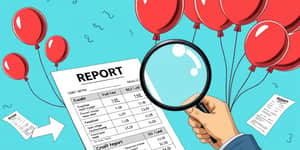
When an unexpected expense hits—be it a car repair, medical bill, or rent shortfall—payday loans can look like a quick solution. Yet these small-dollar advances often come with exorbitant annual percentage rates that trap borrowers in an endless loop of fees and rollovers. With more than 20 million storefront loans totaling $8.6 billion in 2022 alone, the payday lending industry thrives on financial vulnerability, collecting over $2.4 billion in fees from low-income Americans.
Payday loans are designed as short-term emergency solutions, typically requiring repayment by your next paycheck—usually within two weeks. To qualify, lenders demand a photo ID, proof of steady income, and access to a bank account in good standing. Shockingly, no traditional credit check is required, making these loans accessible to people with poor or no credit.
Repayment often happens via an electronic withdrawal from the borrower’s account or a post-dated check held by the lender. When the due date arrives, many borrowers find themselves unable to repay the full borrowed amount plus fees, leading to rollovers or renewals that rack up additional costs.
Payday loans come at a staggering price. With average APRs exceeding 391% and often topping 600%, they rank among the most expensive forms of credit available. Borrowers frequently pay more in fees than they actually receive in cash. In contrast, credit union alternatives are capped at 28% APR.
When borrowers can’t settle their balances, they roll the loan over into a new term. A full 80% of payday loan customers resort to this strategy, paying fresh fees each time. Many pay more in fees than the original loan amount, driving the total owed higher than the initial need.
This behavior gives rise to a cycle of recurring debt. After two weeks, the debt snowballs with new fees, leading to a default rate of about 20%. Defaults can lead to collections efforts that damage credit, making long-term financial stability even more elusive.
Consider Maria, who borrowed $400 to cover a car repair. Two weeks later, she owed $480 after fees. Unable to pay, she rolled it over and incurred another $80 fee. Within two months, Maria had paid more than $300 in fees and still owed the original $400—worsening her stress and financial precariousness.
Low-income families, hourly workers, and those without access to traditional banking are the primary targets. In communities where payday lending is widespread, the economic cost ripples outward—affecting families, local businesses, and civic budgets.
Twelve states ban payday lending outright, while others impose caps, mandatory no-cost repayment plans, or limits on rollovers. Yet in the 30 states where payday loans remain legal, consumers continue to bear the burden of high fees and short repayment cycles.
Policy reforms—such as restricting APRs, enforcing clear disclosures, and expanding credit union services—offer pathways to reduce the prevalence of predatory loans and protect vulnerable borrowers from harm.
Before reaching for a payday loan, explore these more affordable and supportive options. Each approach can help you address financial emergencies without falling into a debt trap.
Payday loans are a classic example of predatory and harmful lending practices. They extract high fees from those least able to afford them, worsening financial stress and perpetuating intergenerational poverty. Instead of solving a crisis, they often create a deeper, longer-lasting one.
Seeking a payday loan should be a true last resort. Before signing on the dotted line, reach out for help: a credit union, nonprofit counselor, or community program can often offer a path forward that respects your long-term stability.
Your financial journey doesn’t have to be defined by high-cost debt. With budgeting, planning, and the right support, you can navigate emergencies and build toward a more secure future. Explore local resources, negotiate payment plans, and consider small personal loans from reputable institutions.
By choosing safer alternatives, you invest in long-term financial health rather than trading one crisis for another. The power to reshape your financial story begins with informed choices and the confidence to seek help when you need it.
References













